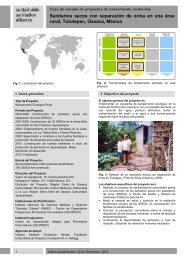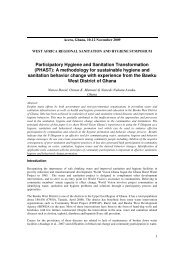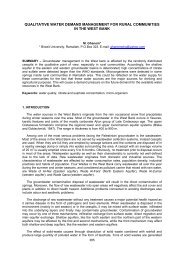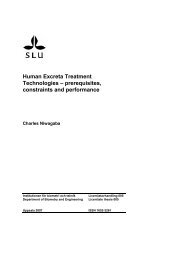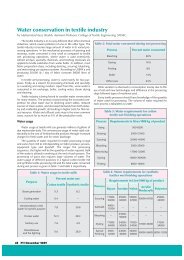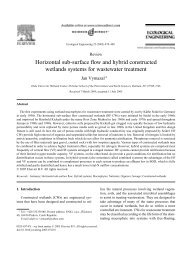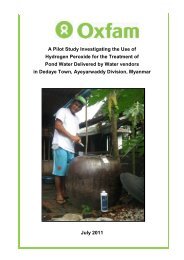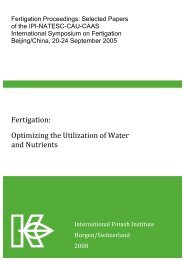The Incinerator Guidebook: A Practical Guide for Selecting ... - SSWM
The Incinerator Guidebook: A Practical Guide for Selecting ... - SSWM
The Incinerator Guidebook: A Practical Guide for Selecting ... - SSWM
You also want an ePaper? Increase the reach of your titles
YUMPU automatically turns print PDFs into web optimized ePapers that Google loves.
III. <strong>Selecting</strong> an Appropriate <strong>Incinerator</strong><br />
<strong>The</strong> following are key steps to follow when selecting the appropriate incinerator <strong>for</strong> HCWM to<br />
meet country and programmatic needs. Whether selecting one incinerator <strong>for</strong> one health facility or<br />
selecting several <strong>for</strong> a country, following the steps below will help ensure that the appropriate<br />
technologies are procured to meet the HCWM system<br />
needs.<br />
Key steps to selecting an incinerator design<br />
When planning <strong>for</strong> a large-scale procurement of multiple<br />
units, the selection process will take considerable ef<strong>for</strong>t<br />
but is a necessity when investing a large amount of money<br />
into the system. Even when procuring one incinerator,<br />
following these steps will take time.<br />
1. Determine your health system needs <strong>for</strong><br />
HCWM treatment and disposal solutions.<br />
2. Assess the infrastructure of the area.<br />
3. Determine availability of local resources<br />
to support construction and operation.<br />
This guidebook provides general in<strong>for</strong>mation about each 4. Assess policy environment.<br />
step in the procurement process and the questions that<br />
5. Develop cost estimates.<br />
need to be addressed in order to guide country-level<br />
6. Identify lead candidate incinerator<br />
planning and decision-making. A resource developed by<br />
designs and determine which units to<br />
PATH, Planning <strong>for</strong> Safe Syringe Disposal, may be a<br />
procure.<br />
useful reference <strong>for</strong> this process. This document can be<br />
found at http://www.path.org/files/TS_syringe_disposal_plan.pdf.<br />
Key steps <strong>for</strong> selecting an incinerator design<br />
1. Determine your health system needs <strong>for</strong> HCWM treatment and disposal solutions.<br />
In order to determine what type of incineration technology would best fit your health system<br />
needs, it is important to undertake the following:<br />
� Map existing HCWM infrastructure. Where is the closest functioning incinerator or<br />
other treatment facility? Is transport of HCW possible? Will other facilities be interested<br />
in bringing HCW to this facility <strong>for</strong> disposal? If an incinerator does not exist, what is the<br />
best location to situate a centralized incinerator in a service area?<br />
� Characterize waste. What types of HCW are produced in your facility/service area?<br />
What types require treatment by incineration?<br />
� Quantify waste. How many safety boxes and bags of infectious waste are filled each day<br />
in your facility/service area? What other waste will need to be incinerated? Is there an<br />
effective segregation system in place already to minimize quantities of waste that require<br />
treatment?<br />
2. Assess the infrastructure of the area.<br />
What condition are the roads near the facilities where incinerators are needed? Is power<br />
available? Is there land available on facility grounds to construct an incinerator (including an<br />
ash pit)?<br />
3. Determine availability of local resources to support construction and operation.<br />
� Determine availability of skilled engineers <strong>for</strong> installation. Are there skilled engineers to<br />
manage proper construction and provide ongoing support once the unit is installed?<br />
� Determine availability of quality materials. If constructing a unit such as a De Mont<strong>for</strong>t<br />
and the project proposes procuring materials locally, are quality refractory bricks<br />
available? What about high-quality metal components?<br />
4. Assess policy environment.<br />
� Determine if incineration technologies meet current environmental standards/polices.<br />
7



